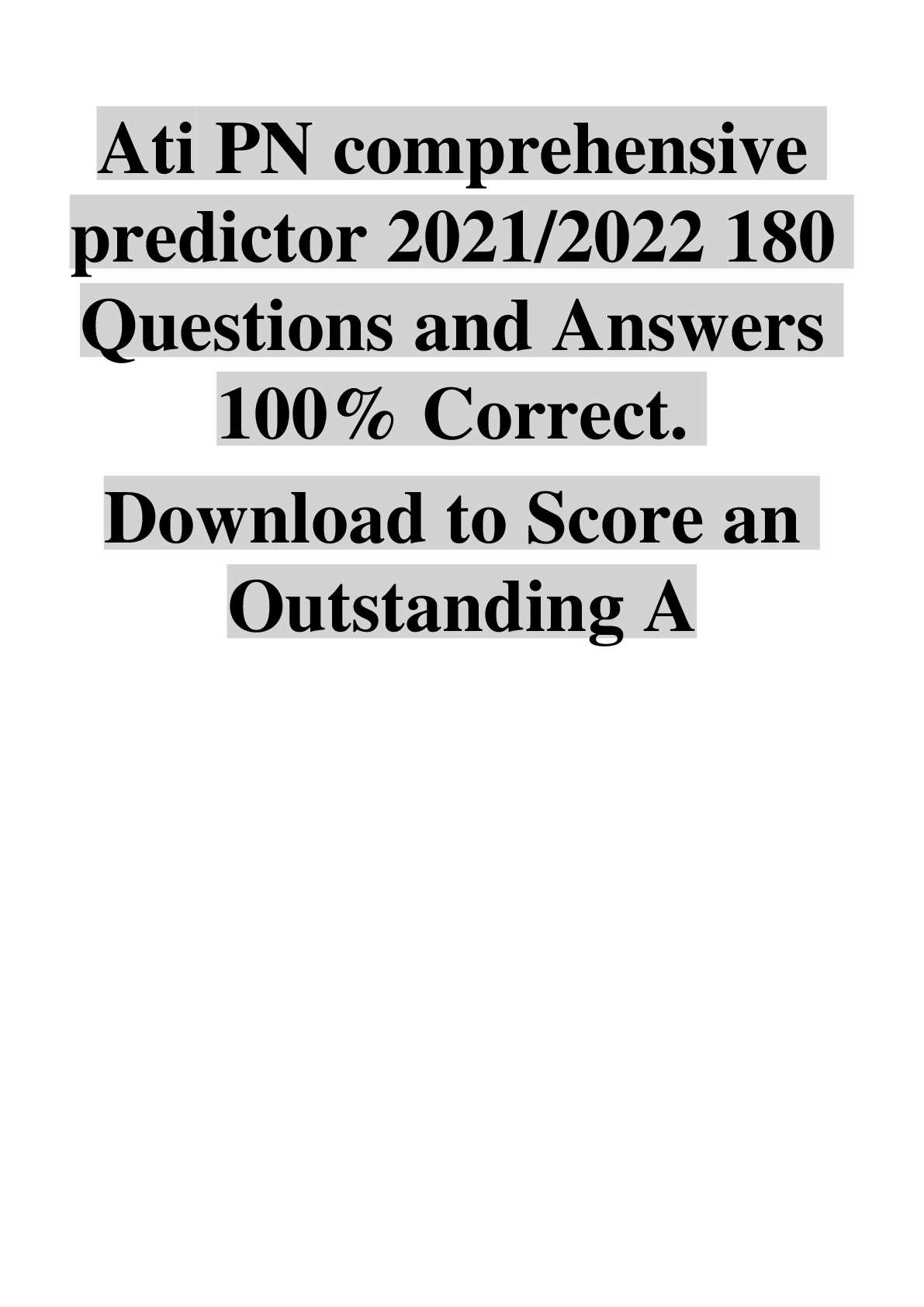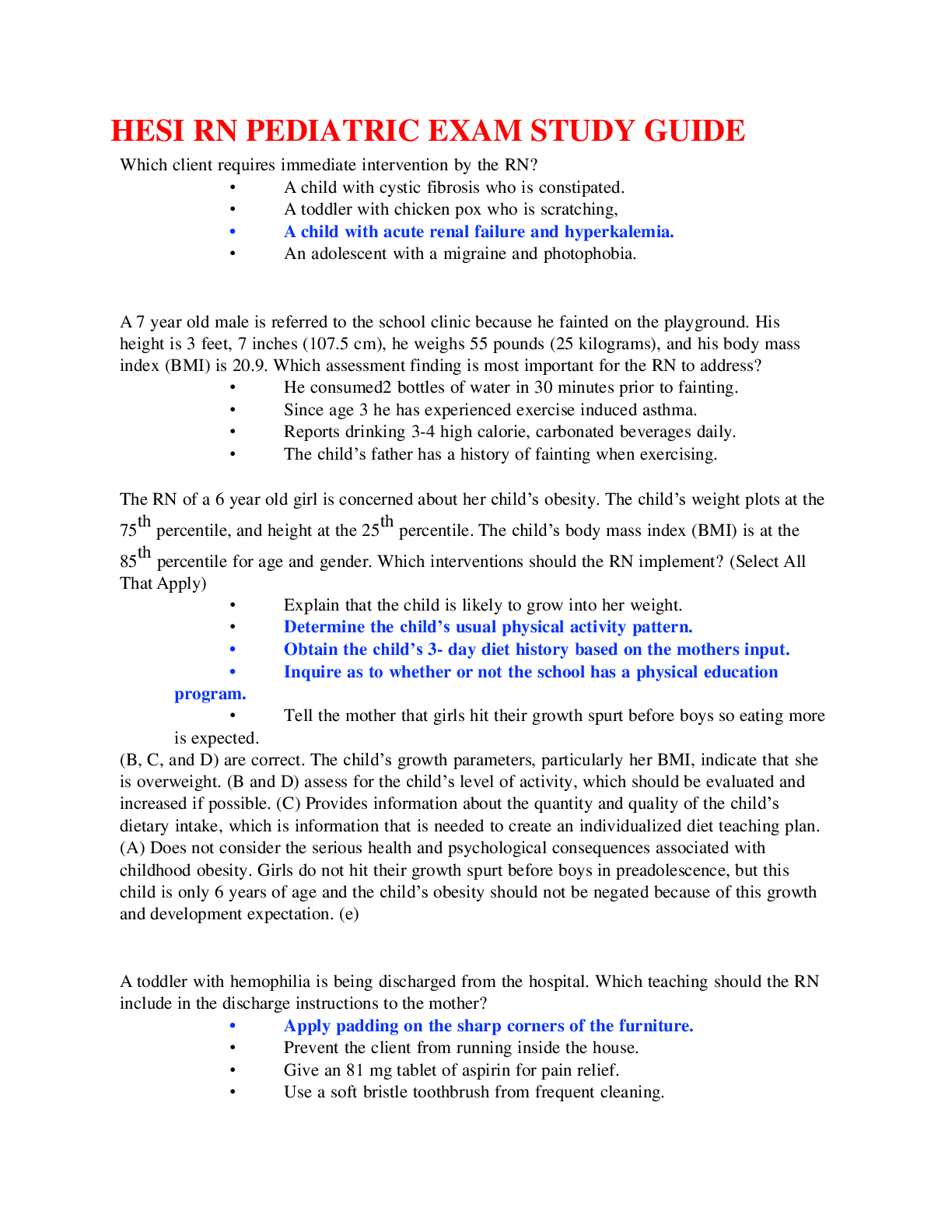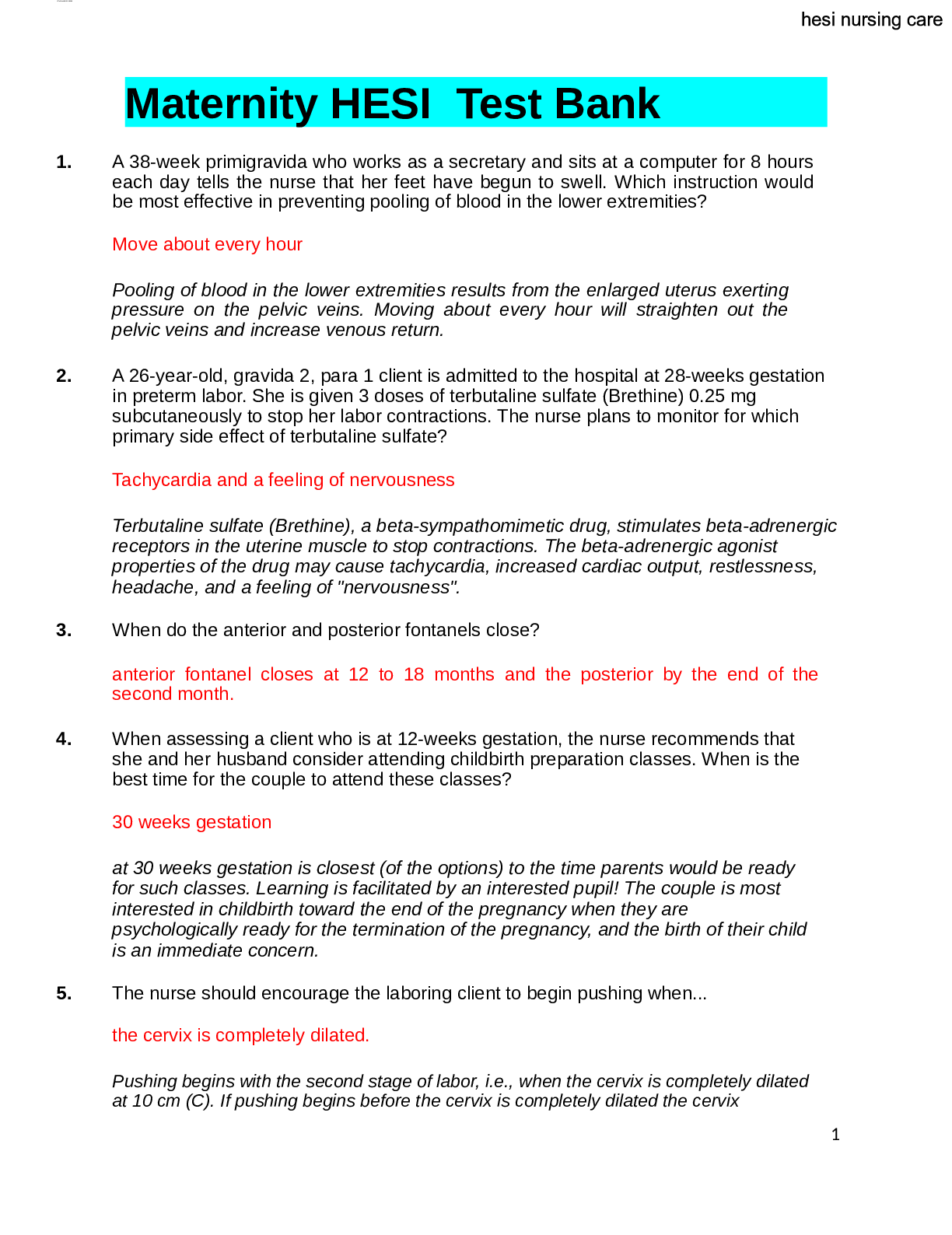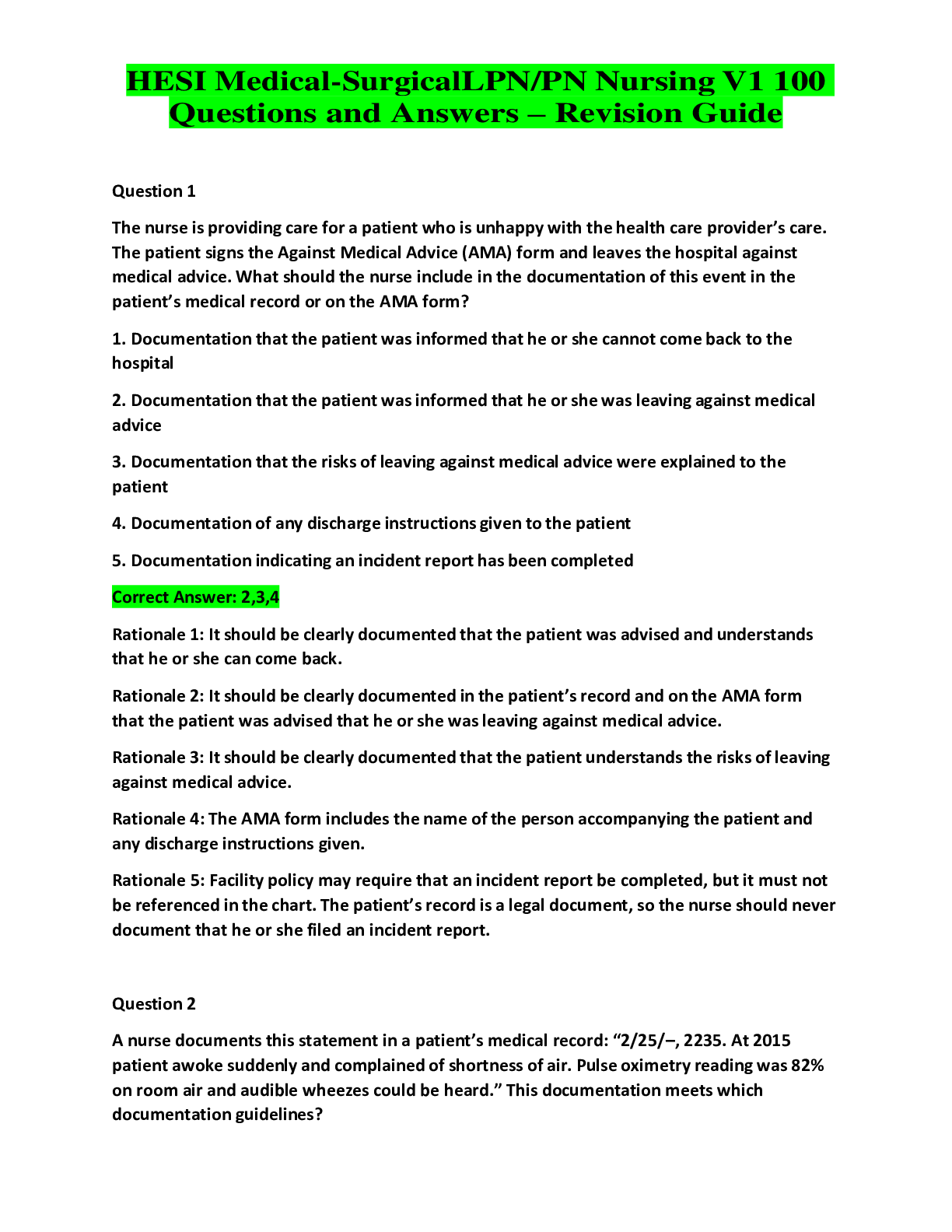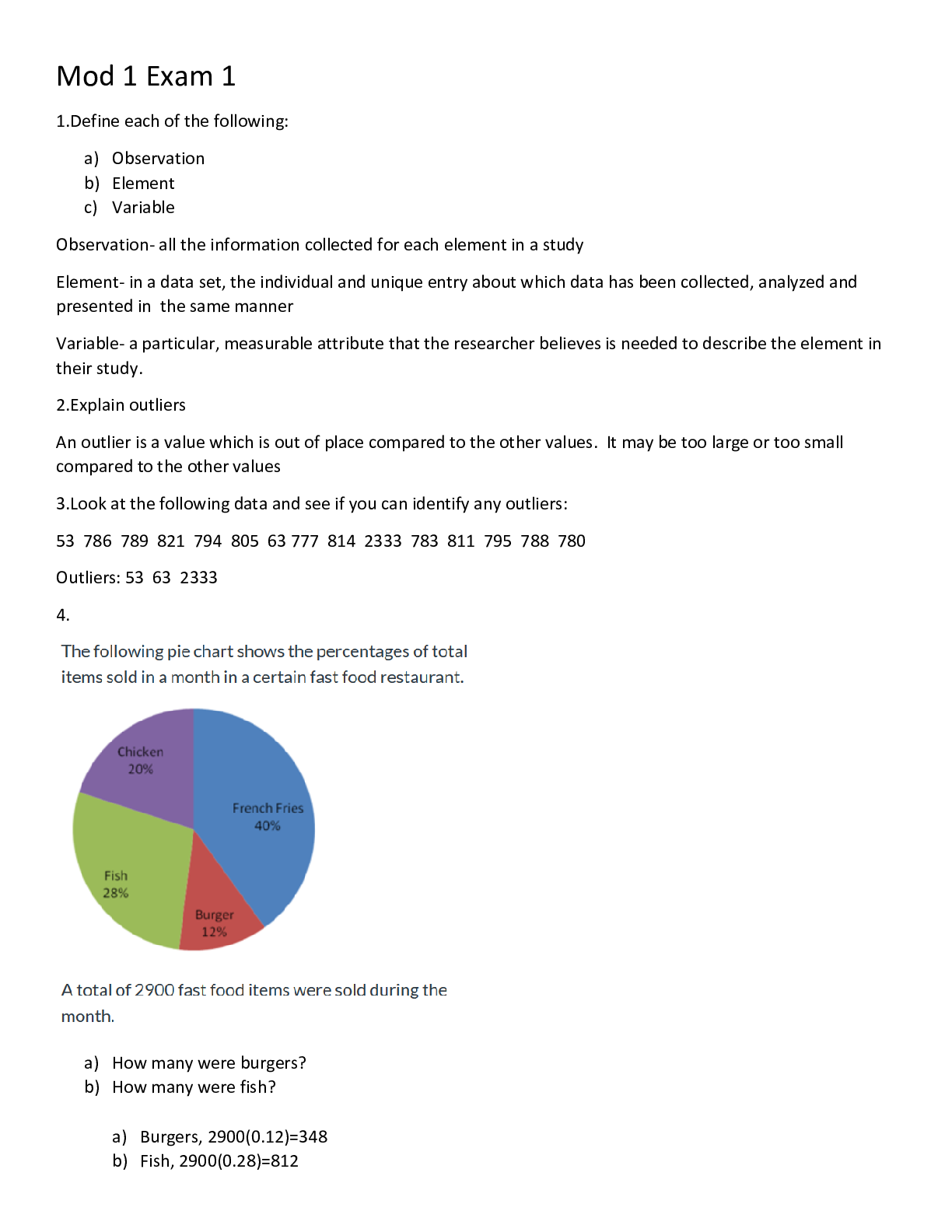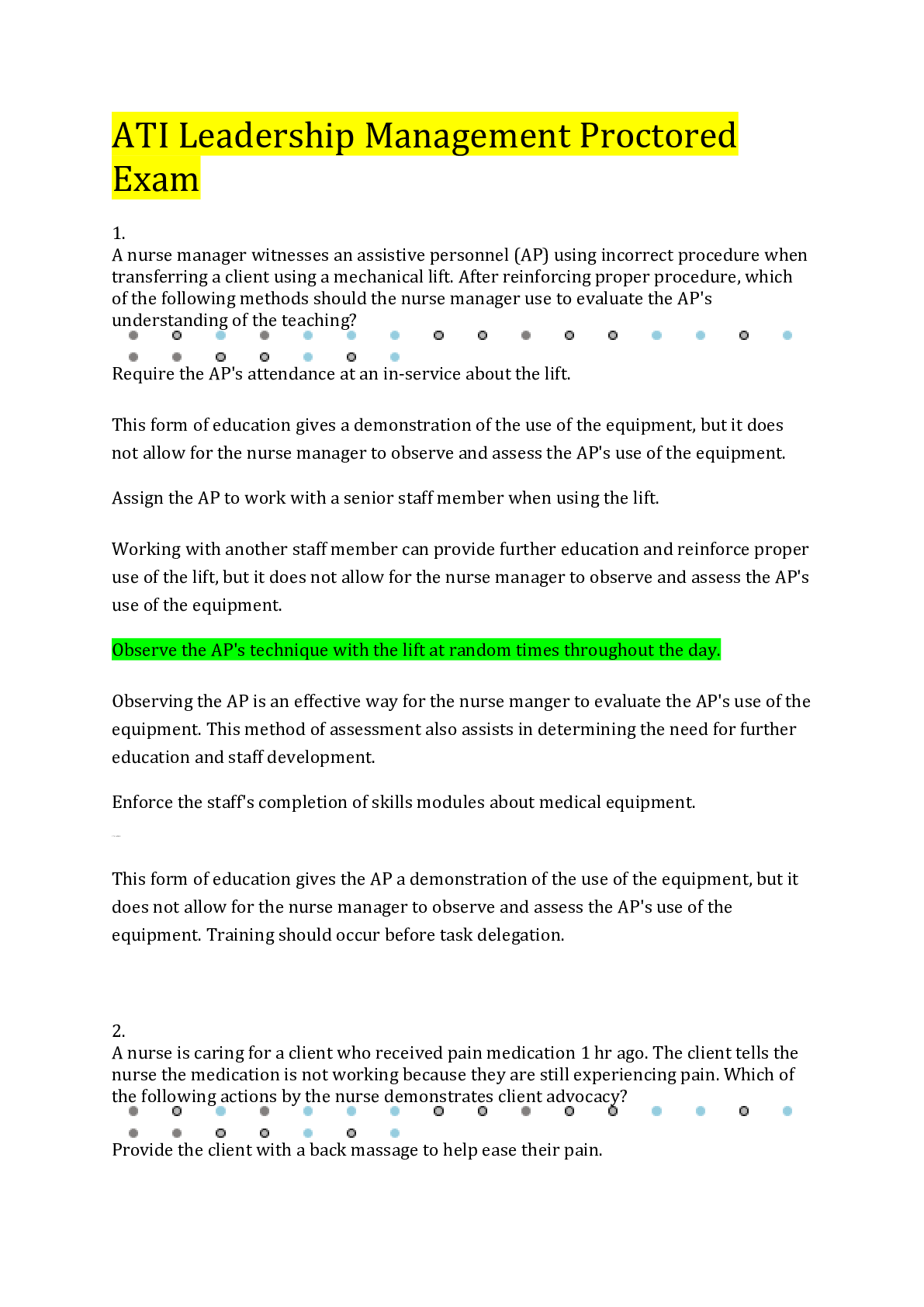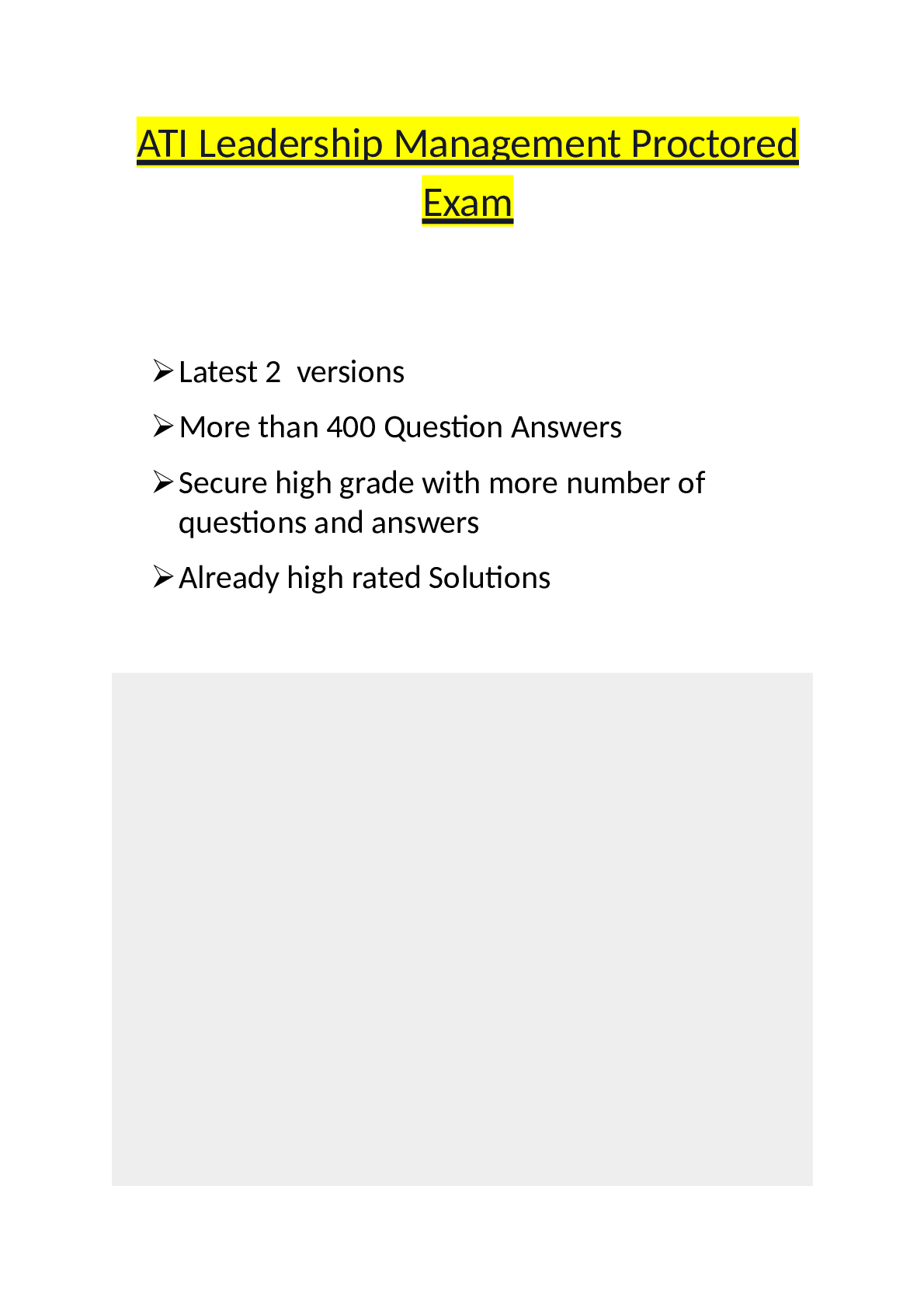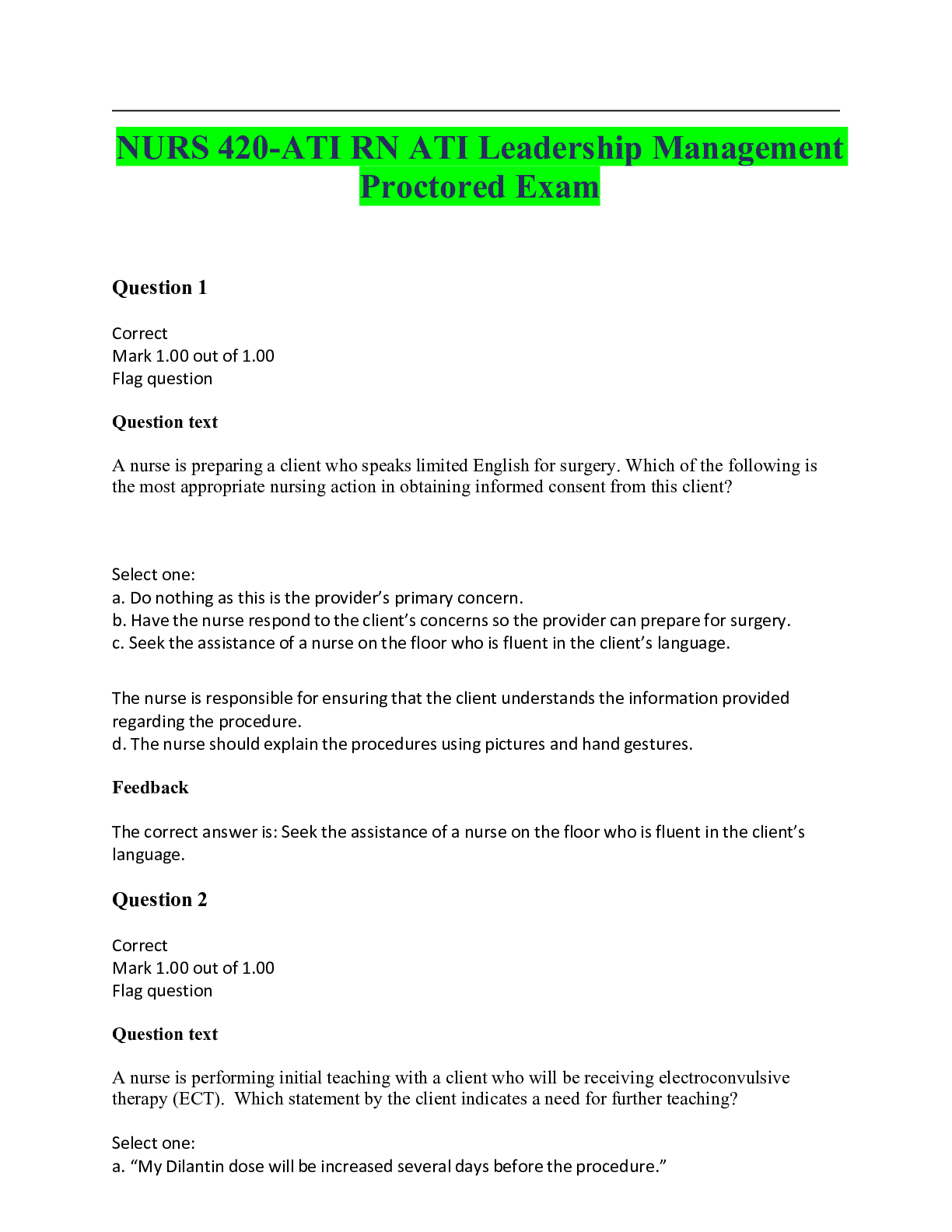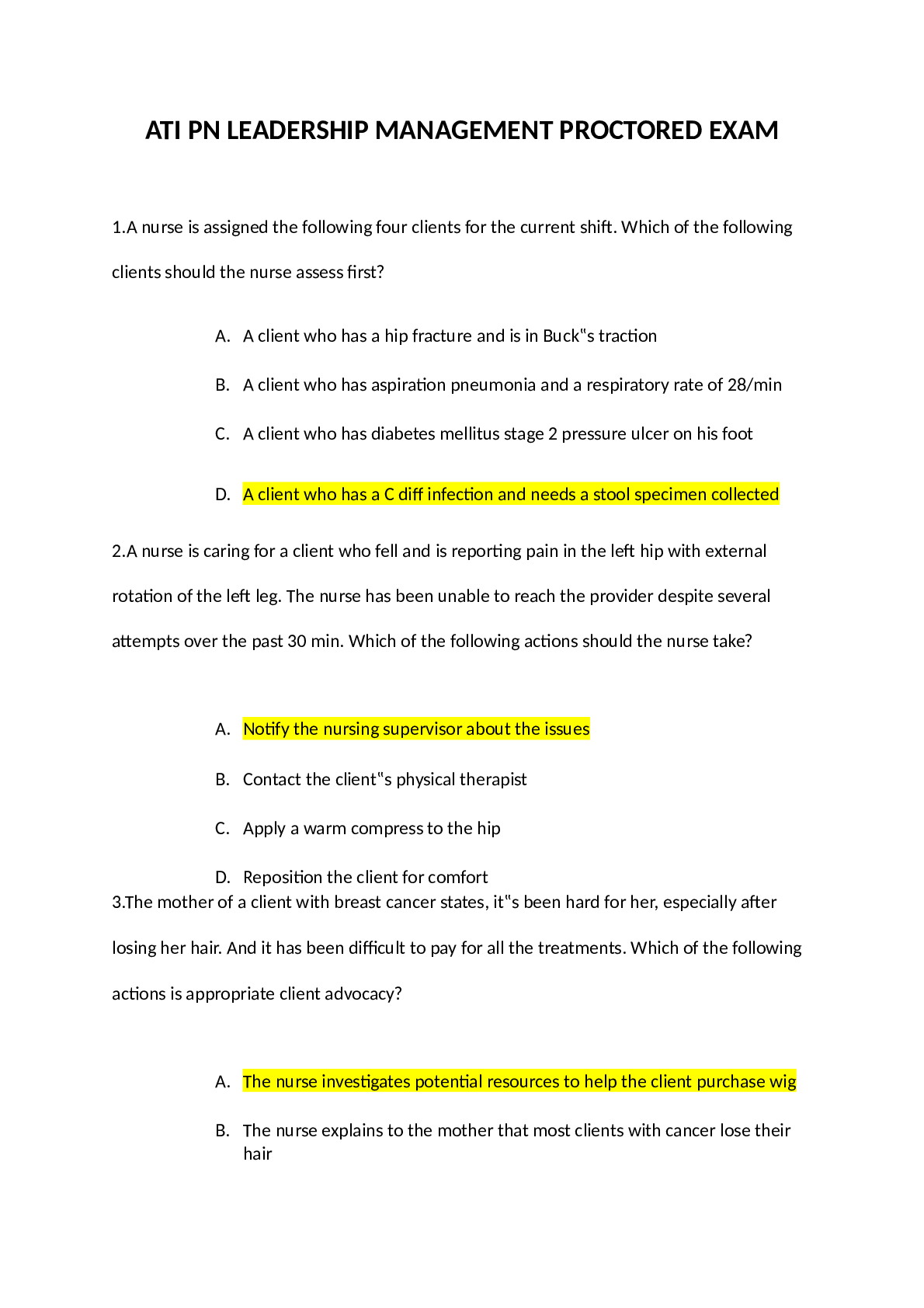ATI RN LEADERSHIP MANAGEMENT PROCTORED EXAM-2021 /CORRECT ANSWERS
Document Content and Description Below
ATI RN LEADERSHIP MANAGEMENT PROCTORED EXAM (Detail Solutions) RETAKE 1. A patient had a stroke and must use a cane for support. A nurse is preparing to teach the patient about the cane. Which le... arning objective/outcome is most appropriate for the nurse to include in the teaching plan? a. The patient will walk to the bathroom and back to bed using a cane. b. The patient will understand the importance of using a cane. c. The patient will know the correct use of a cane. d. The patient will learn how to use a cane. ANS: A Outcomes often describe a behavior that identifies the patient’s ability to do something on completion of teaching such as will empty a colostomy bag or will administer an injection. Understand, learn, and know are not behaviors that can be observed or evaluated. 2. Which learning objective/outcome has the highest priority for a patient with life-threatening, severe food allergies that require an EpiPen (epinephrine)? a. The patient will identify the main ingredients in several foods. b. The patient will list the side effects of epinephrine. c. The patient will learn about food labels. d. The patient will administer epinephrine. ANS: D Once you assist in meeting patient needs related to basic survival (how to give epinephrine), you can discuss other topics, such as nutritional needs and side effects of medications. For example, a patient recently diagnosed with coronary artery disease has deficient knowledge related to the illness and its implications. The patient benefits most by first learning about the correct way to take nitroglycerin and how long to wait before calling for help when chest pain occurs. Thus, in this situation, the patient benefits most by first learning about the correct way to take epinephrine. “The patient will learn about food labels” is not objective and measurable and is not correctly written. 3. After a teaching session on taking blood pressures, the nurse tells the patient, “You took that blood pressure like an experienced nurse.” Which type of reinforcement did the nurse use? a. Social acknowledgment b. Pleasurable activity c. Tangible reward d. Entrusting ANS: A Reinforcers come in the form of social acknowledgments (e.g., nods, smiles, words of encouragement), pleasurable activities (e.g., walks or play time), and tangible rewards (e.g., toys or food). The entrusting approach is a teaching approach that provides a patient the opportunity to manage self-care. It is not a type of reinforcement. 4. A patient with heart failure is learning to reduce salt in the diet. When will be the best time for the nurse to address this topic? a. At bedtime, while the patient is relaxed b. At bath time, when the nurse is cleaning the patient c. At lunchtime, while the nurse is preparing the food tray At medication time, when the nurse is administering patient d. medication ANS: C In this situation, because the teaching is about food, coordinating it with routine nursing care that involves food can be effective. Many nurses find that they are able to teach more effectively while delivering nursing care. For example, while hanging blood, you explain to the patient why the blood is necessary and the symptoms of a transfusion reaction that need to be reported immediately. At bedtime would be a good time to discuss routines that enhance sleep. At bath time 38 would be a good time to describe skin care and how to prevent pressure ulcers. At medication time would be a good time to explain the purposes and side effects of the medication. 5. A nurse is teaching a patient who has low health literacy about chronic obstructive pulmonary disease (COPD) while giving COPD medications. Which technique is most appropriate for the nurse to use? a. Use complex analogies to describe COPD. Ask for feedback to assess understanding of COPD at the end of the b. session. Offer pamphlets about COPD written at the eighth grade level with c. large type. Include the most important information on COPD at the beginning of d. the session. ANS: D Include the most important information at the beginning of the session for patients with literacy or learning disabilities. Also, use visual cues and simple, not complex, analogies when appropriate. Another technique is to frequently ask patients for feedback to determine whether they comprehend the information. Additionally, provide teaching materials that reflect the reading level of the patient, with attention given to short words and sentences, large type, and simple format (generally, information written on a fifth grade reading level is recommended for adult learners). 39 6. A nurse is teac ....................................................................CONTINUED [Show More]
Last updated: 1 year ago
Preview 1 out of 26 pages
Instant download
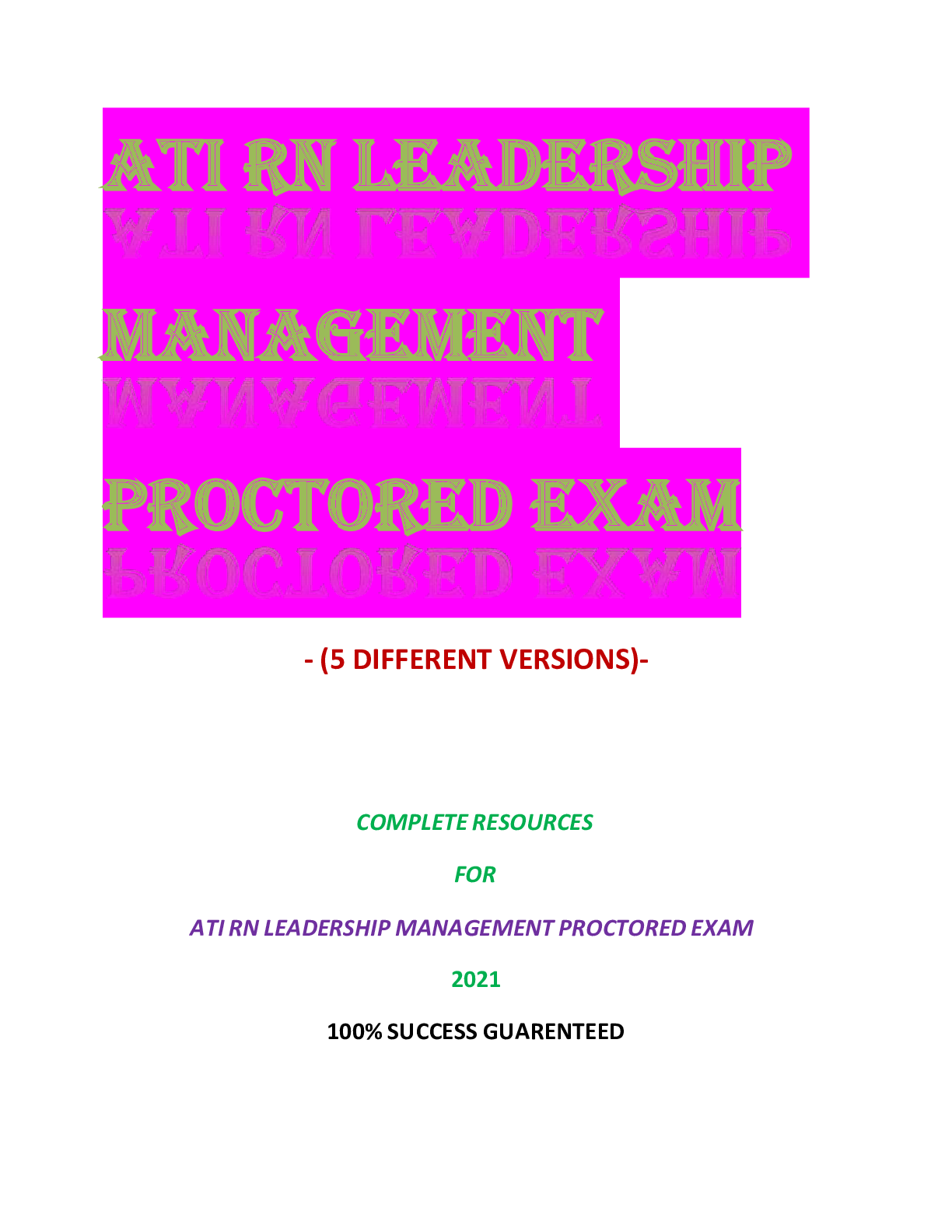
Buy this document to get the full access instantly
Instant Download Access after purchase
Add to cartInstant download
Reviews( 0 )
Document information
Connected school, study & course
About the document
Uploaded On
Jul 18, 2021
Number of pages
26
Written in
Additional information
This document has been written for:
Uploaded
Jul 18, 2021
Downloads
0
Views
44

